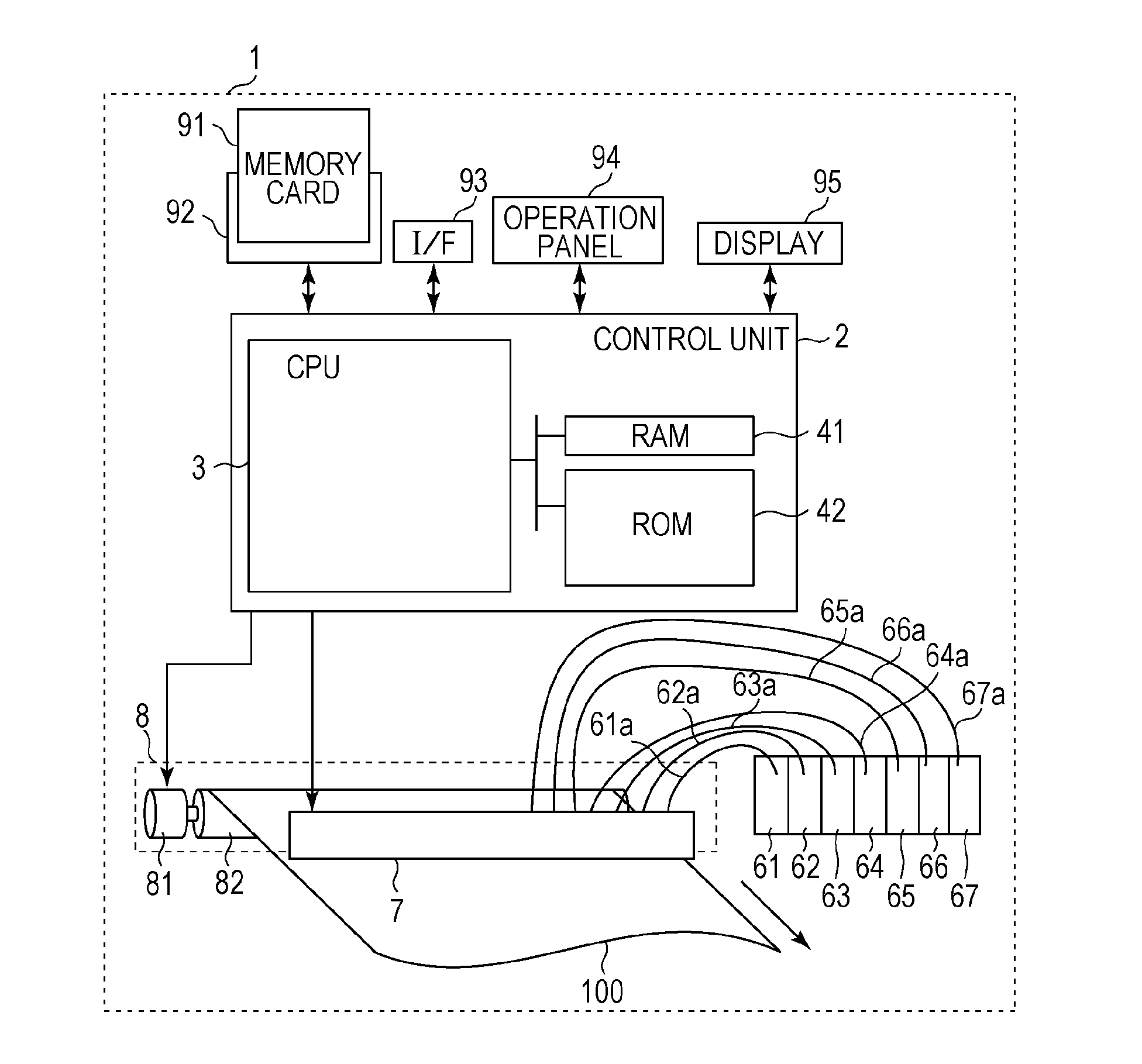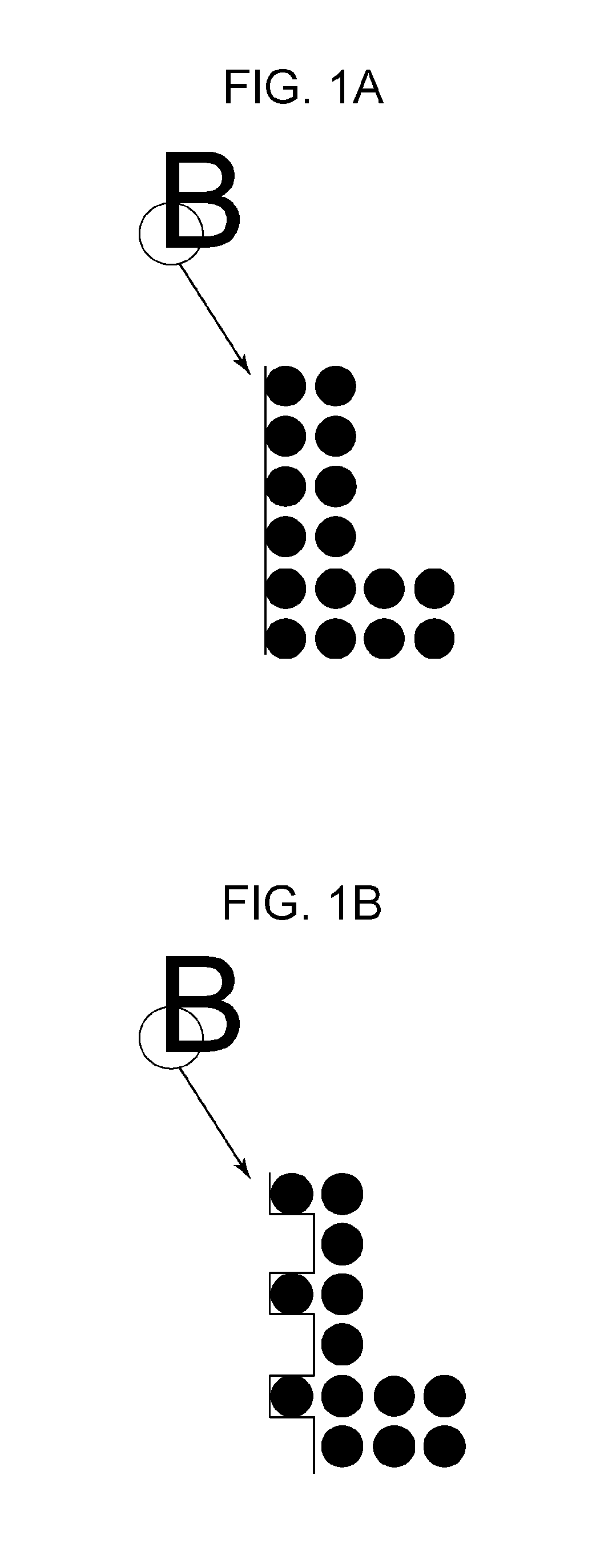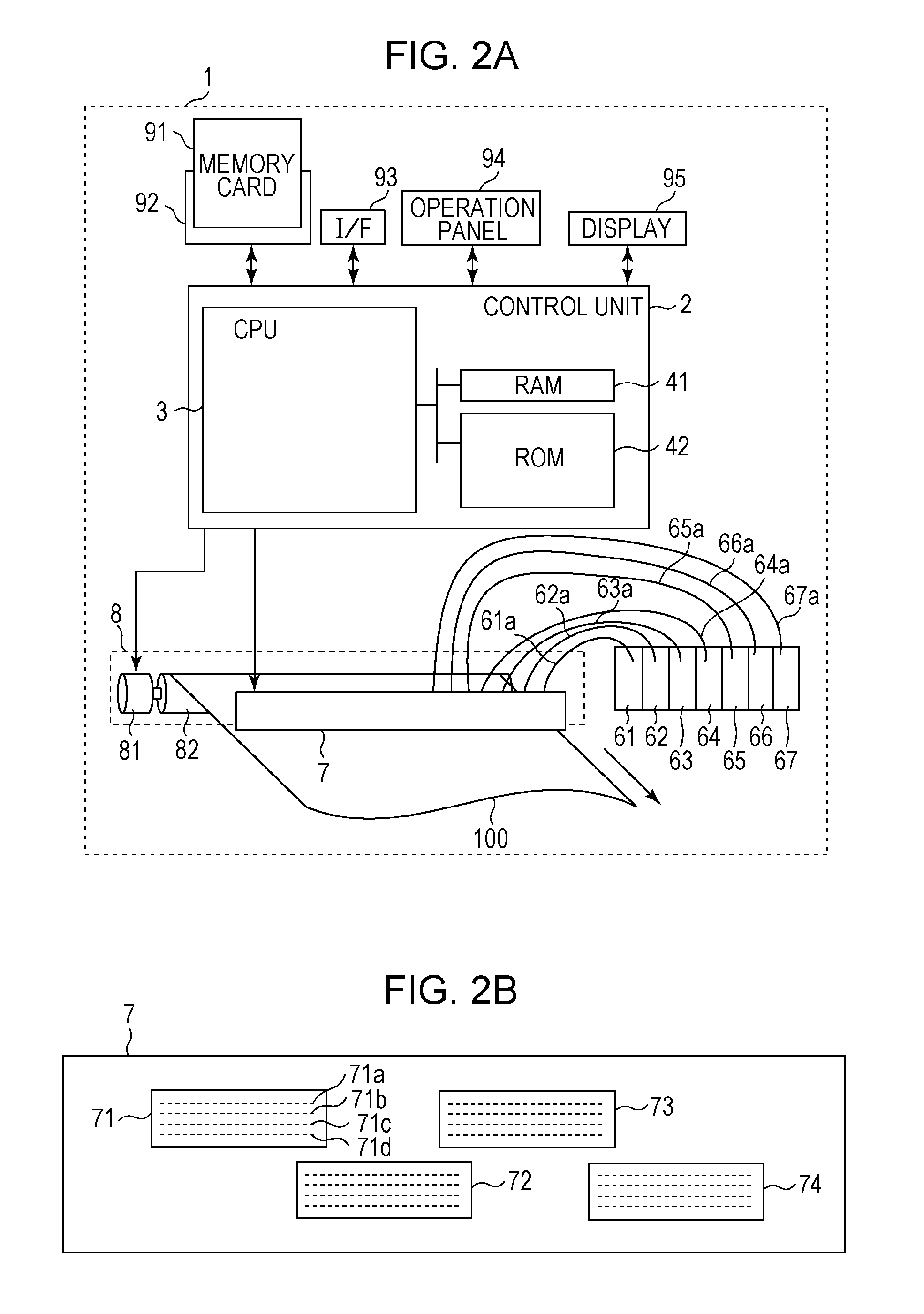Image processing method and image processing apparatus
- Summary
- Abstract
- Description
- Claims
- Application Information
AI Technical Summary
Benefits of technology
Problems solved by technology
Method used
Image
Examples
first embodiment
[0028]FIG. 2A is a schematic diagram illustrating an ink-jet recording apparatus according to a first embodiment, and FIG. 2B is a schematic diagram illustrating a recording head according to the present embodiment. The ink-jet recording apparatus 1 according to the present embodiment is a printer of a full line type, and includes a control unit 2, ink cartridges 61, 62, 63, 64, 65, 66, and 67, a recording head 7, and a recording medium conveying mechanism 8. In the ink cartridges 61 to 67, ink of cyan (C), magenta (M), yellow (Y), black (K), gray (Gy), light cyan (Lc), light magenta (Lm) are respectively disposed.
[0029]The recording head 7 is a recording head for use in the full line type printer, and includes a plurality of nozzles arranged in a direction crossing a conveying direction of a recording medium. The ink disposed in each of the ink cartridges 61 to 67 is supplied to nozzles of the recording head via corresponding one of ink supply pipes 61a, 62a, 63a, 64a, 65a, 66a, an...
second embodiment
[0073]In a second embodiment described below, the density correction process is performed in a different manner from that according to the first embodiment described above. FIGS. 14A to 14D illustrates a specific example of the density correction process according to the second embodiment.
[0074]In the first embodiment described above, the determination is performed as to whether the ink data value for each pixel is equal to or greater than the predetermined threshold value or smaller than the predetermined threshold value, and the density correction process is not performed for pixels with ink data values equal to or greater than the predetermined threshold value. In contrast, in the present embodiment, the determination is not performed as to whether ink data values are equal to or larger than the threshold value, but, for any pixel, the processing flow proceeds to the step of the density correction process. In the correction table, the correction amount is set to 0 for ink data va...
third embodiment
[0078]In the first and second embodiments described above, the density correction process is not performed when the intensity level of ink data is equal to or larger than the predetermined threshold value. In contrast, in a third embodiment described below, the determination as to whether to correct the density of ink data is performed based on attribute information indicating whether each pixel is an element of a character or a thin line.
[0079]FIG. 15 a flow chart illustrating image processing according to the present embodiment. This image processing is similar to that according to the first embodiment (steps S11 and S12 and steps S13 to S16 in FIG. 3) except for a process of adding character and thin line information in step S302 and a density correction process in step S304. In step S302, the attribute information of the pixel of interest is acquired, and a determination is performed based on the acquired attribute information as to whether the pixel is an element of a character...
PUM
 Login to View More
Login to View More Abstract
Description
Claims
Application Information
 Login to View More
Login to View More - R&D
- Intellectual Property
- Life Sciences
- Materials
- Tech Scout
- Unparalleled Data Quality
- Higher Quality Content
- 60% Fewer Hallucinations
Browse by: Latest US Patents, China's latest patents, Technical Efficacy Thesaurus, Application Domain, Technology Topic, Popular Technical Reports.
© 2025 PatSnap. All rights reserved.Legal|Privacy policy|Modern Slavery Act Transparency Statement|Sitemap|About US| Contact US: help@patsnap.com



